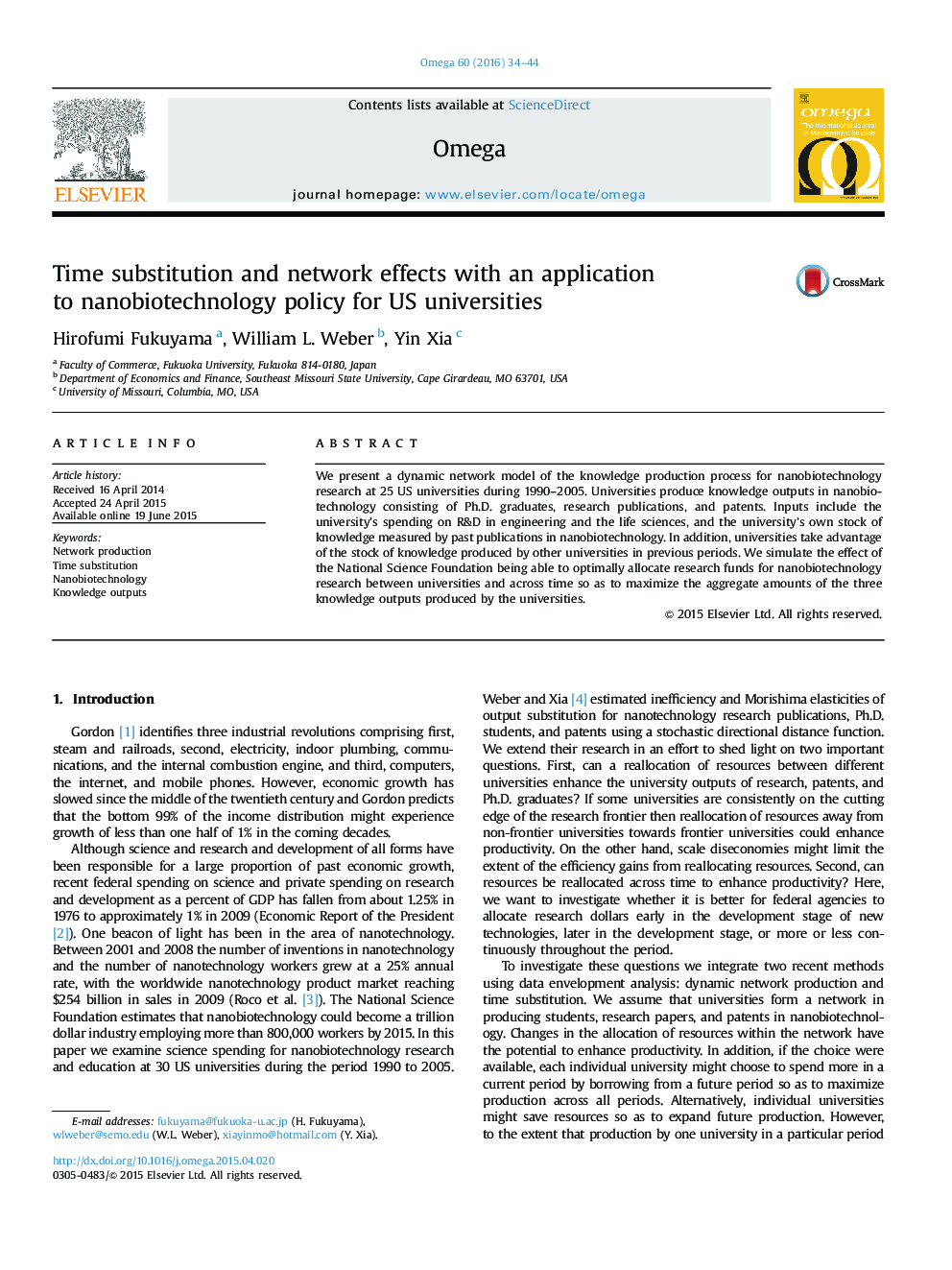| Article ID | Journal | Published Year | Pages | File Type |
|---|---|---|---|---|
| 1032403 | Omega | 2016 | 11 Pages |
•A dynamic network production technology with spillovers is examined for 25 US research universities producing nanobiotechnology knowledge outputs.•Greater efficiency could increase the number of each knowledge output-Ph.D. graduates, publications, and patents-by approximately 0.2 to 0.5 at the average university.•Reallocating National Science Foundation (NSF) funds optimally across universities and time could more than double knowledge outputs if the reallocated funds were used efficiently.
We present a dynamic network model of the knowledge production process for nanobiotechnology research at 25 US universities during 1990–2005. Universities produce knowledge outputs in nanobiotechnology consisting of Ph.D. graduates, research publications, and patents. Inputs include the university’s spending on R&D in engineering and the life sciences, and the university’s own stock of knowledge measured by past publications in nanobiotechnology. In addition, universities take advantage of the stock of knowledge produced by other universities in previous periods. We simulate the effect of the National Science Foundation being able to optimally allocate research funds for nanobiotechnology research between universities and across time so as to maximize the aggregate amounts of the three knowledge outputs produced by the universities.
